#Tridacna gigas
Explore tagged Tumblr posts
Photo
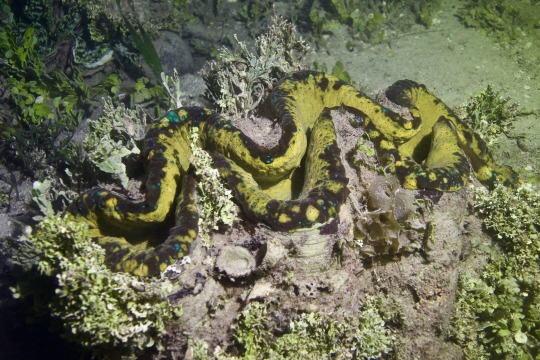
BLEACHING REDUCE THE REPRODUCTION OF GIANT CLAMS
As sea warms, corals expel zooxanthellaes, their symbiotic algae, turning white, in a process called bleaching, but others animals with symbiotic algae, as giant clams, can be affected by bleanching too. Bleaching caused by the increase in seawater temperatures causes massive mortalities in giant clams, as they rely in these simbiotic algaes, wich provide them by the majority of its food source. However, how bleaching directly affects the reproductive performance of giant clams is, to date, unknown.
Researchers examined the direct impacts of bleaching on the reproduction of the giant clam Tridacna gigas between 2020 and 2021 in the Philippines, and found out that bleaching can affect their reproduction. Bleaching reduces the number of eggs giant clams produce. The increasing frequency and intensity of bleaching due to thermal stress can lower the reproductive potential of giant clams and likely other zooxanthellate organisms, resulting in reduced recruitment and population decline.
Photo iNaturalist user Bird Explorers
Reference: Sayco et al., 2023. Bleaching reduces reproduction in the giant clam Tridacna gigas. Marine Ecology Progress Series.
#Tridacna gigas#bleach#bleaching#science#scienceblr#sciblr#marine science#marine biology#animals#pacific#biology#climate change#global warming
16 notes
·
View notes
Link
#Congress#Federal Government#Guam#Science and Environment#Contextomy#Endangered Species Act#giant clams#Hippopus hippopus#James Moylan#National Oceanic and Atmospheric Administration#Tridacna derasa#Tridacna gigas
0 notes
Text
Le bénitier géant ou tridacne géant, merveilleux coquillage en danger
Nouvel article publié sur https://www.2tout2rien.fr/benitier-geant/
Le bénitier géant ou tridacne géant, merveilleux coquillage en danger
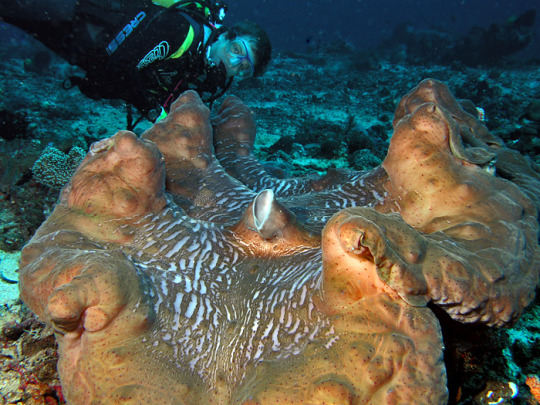
#bénitier#coquillage#corail#espece#géant#mer#mollusque#océan#Tridacna gigas#tridacne#UICN#vidéo#animaux#imxok
0 notes
Text
Round 1 - Phylum Mollusca
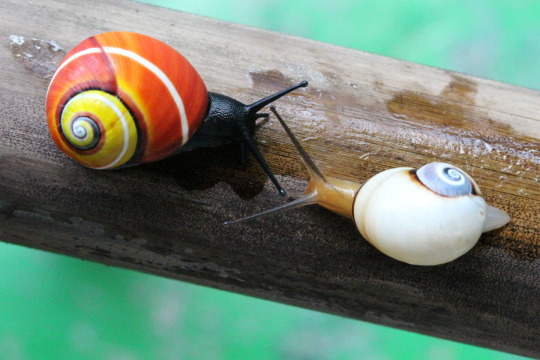
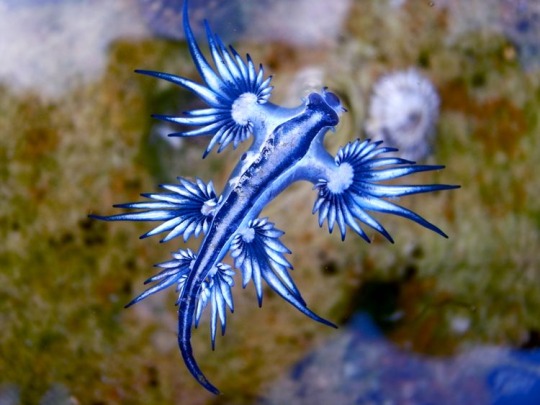
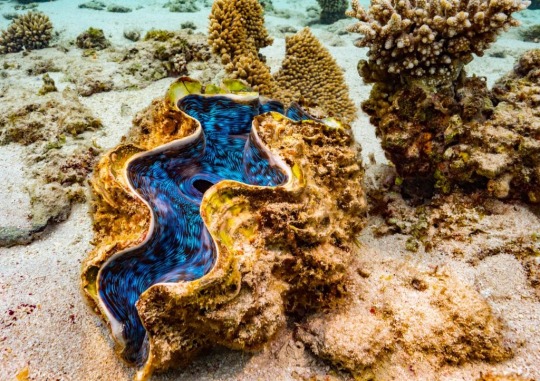
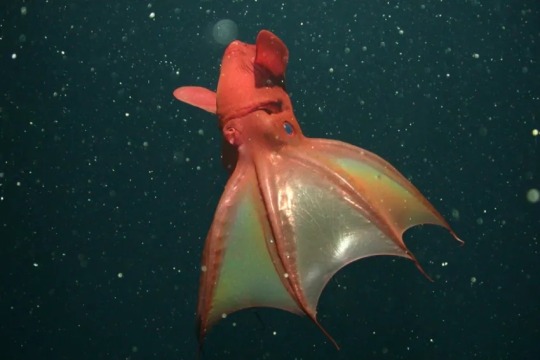
(Sources - 1, 2, 3, 4)
The second largest phylum, Mollusca contains over 76,000 living species and somewhere between 60,000 and 100,000 extinct species, including the ammonites and helcionelloids. Living groups include the chitons, solenogasters, caudofoveates, cephalopods (octopuses, squids, cuttlefish, nautiloids, etc.), scaphopods, gastropods (slugs and snails), and bivalves.
Molluscs are highly diverse, living on land, in freshwater, and in saltwater, where they comprise over 23% of all named marine organisms. The most diverse molluscs are the gastropods which comprise over 80% of known molluscs. Due to their high diversity, the only things most molluscs have in common are a soft body composed almost entirely of muscle, a mantle with a significant cavity used for breathing and excretion, the presence of a radula (bivalves excluded), and the structure of their nervous system.
Many molluscs are endangered due to collecting and killing individuals for their meat and/or decorative shells.

Propaganda under the cut:
Cephalopods are one of the (if not the) most neurologically advanced of all invertebrates and are capable of using tools, solving puzzles, and play.
Masters of camouflage, many cephalopods can change color, shape, and texture to hide from predators, sneak up on prey, and communicate with each other
The largest molluscs are the Giant Squid (Architeuthis dux), with 12–13 m (39–43 ft) long females and 10 m (33 ft) long males, and the Colossal Squid (Mesonychoteuthis hamiltoni) which is estimated between 10 m (33 ft) and 14 m (46 ft) long. The Giant Squid has much longer tentacles, but the Colossal Squid is heavier, reaching a mass of at least 495 kilograms (1,091 lb). The largest specimens of Colossal Squid, known only from beaks found in sperm whale stomachs, may perhaps weigh as much as 600–700 kg (1,300–1,500 lb).
Mollusc shells make up most of the “seashells” washed ashore, and are created by the animal via secretions of chitin and conchiolin from its mantle edge. Not all molluscs have shells (ex: nudibranchs) and for some, the shell is internal (ex: cuttlefish). Mollusc shells come in many beautiful colors, shapes, and sizes.
Most molluscs have eyes, and all have sensors to detect chemicals, vibrations, and touch. Of the phyla we have covered so far, their senses are the most developed.
Conchs can look at you like this:
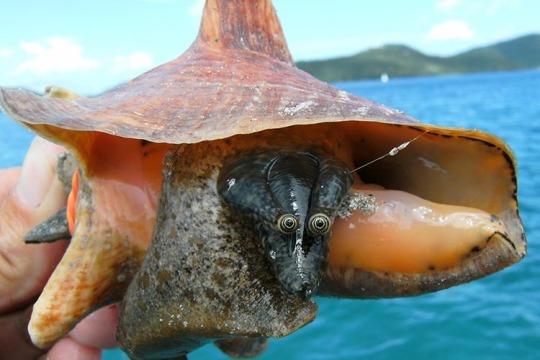
(Source)
All cone snails are venomous, and some of the larger species are some of the most venomous animals in the world. Even though some species’ stings are fatal to humans, their sophisticated venom has saved lives through its use in neurological research.
Humans don’t just use mollusk meat and shells, but also luxuries like pearls, mother of pearl, Tyrian purple dye, and sea silk. As stated above, many species are now endangered due to human use, but some are farmed for their meat, pearls, and shells. The farming of bivalves is more ecologically-friendly than the farming of chordates as, rather than create waste, bivalves like mussels and oysters actually clean the water.
As filter-feeders, bivalves are natural water filters. A single 5.08 cm (2 inch) clam can filter up to 10-12 gallons of seawater a day. They can even filter microplastics out of polluted water.
The largest bivalve is the Giant Clam (Tridacna gigas) which can weigh over 200 kilograms (440 lb), measure as much as 120 cm (3.11 ft) across, and have an average lifespan in the wild of more than 100 years.
Cover your ears, kids. Terrestrial slugs, which are hermaphroditic, have some of the most intimate sex on the planet. A pair of slugs will suspend from a chord of mucus, heads down, and intertwine their bodies in a tight spiral. They will then evert their penuses and entwine them as well, exchanging sperm while hanging in midair. Slug porn, narrated by Sir David Attenborough, for your viewing pleasure.
#round 1#animal polls#we’ve reached my first personal favorite because cuttlefish are genuinely one of my all time favorite animals#mollusca
197 notes
·
View notes
Note
Trick or treat! 🦞
Hope you have room for a giant clam (Tridacna gigas)!

94 notes
·
View notes
Text

My baby giant clam Clamabelle has fully extended her mantle today, after recovering from shipping. She's also adjusting her position to attain the most comfy spot.
Yesterday I had to keep fiddling with her placement because she kept yeeting herself off the platform. Once Tridacna clams find a spot they like they'll permanently attach but the young ones are rowdy. They clumsily move around until they get the combo of light, stability and flow they're looking for.
Moving around like this can sometimes result in disasters where they fall too far and hurt themselves or they end up upside down in the sand bed where they're starved for light and their fleshy bits are vulnerable to opportunists, so I hope she stays relatively in this spot.
Tridacnid clams are the largest clams on Earth and have independently evolved a symbiosis with dinoflagellates and obtain a lot of their calories from photosynthesis just like coral does. The rest of their food is obtained from filtering sea water for microbes, like you'd expect from a clam. They're gorgeous, weird animals.
Clamabelle is a Tridacna maxima, which has the hilarious common name of "small giant clam" because they "only" grow to a length of 8-12 inches (20-31 cm) as compared to the bigger species of the Tridacna genus, such as Tridacna gigas, the largest clam in the world:

The smallest Tridacnid clam is Tridacna crocea, which "only" grows to a length of about 6 inches (15 cm). Tridacna crocea is also known as "the boring clam" but "boring" as in "cutting into rock" not "boring" as in "dull" because look at this little beast:

Really happy to have such an interesting specimen in my tank and I hope I can take good care of her.
18 notes
·
View notes
Photo




🪸 Meet the Giant Clam (Tridacna gigas)! 🪸
This impressive mollusc is an inhabitant of the ocean floors. It lives in shallow-sunlit waters near coral reefs.
It’s the largest marine bivalve (same group as mussels and oysters), with a shell that can measure up to 1.4 meters at full maturity, weighing up to 250 kilos! #NatureIsTheGreatestShow
Believe it or not, Giant Clams can “walk”.As juveniles, they move very slowly across the ocean floor to find a spot with the best possible sun exposure.Once in place on the reef, a healthy Giant Clam will live on the spot for up to one hundred years!
They live in symbiosis with billions of Zooxanthellae on their tissue - the same algae that live on corals. The Clam provides the algae with a secure place to live. In turn, the algae absorb solar energy and transform it into sugar and other nutrients the mollusc can consume. They allow the Giant Clam to grow to its full size, even when plankton is scarce.
Giant Clams are recognized by the zig-zag shape of their shell, yet each individual presents a unique colourful pattern on its mantle. The Zooxhanthellae algae mixing with the Giant Clam's natural pigments are to thank for these vibrant colour patterns, while the iridescence is caused by a type of cells that protects them from UV radiation.
The massive size and strange appearance of the clams cost them their reputation. According to legends, these “Killer Clams” waited at the bottom of the sea, shell open, to trap unwary swimmers and swallow them in an instant!
In reality, these clams are harmless to humans: they retract when facing threat and move too slowly anyway, not able to fully close their shells in time.
Humans on the other hand, are the Giant Clam’s biggest threat. Overfishing and illegal poaching almost drove these molluscs to extinction. They are caught for their sought-after mantle tissue (‘meat’) and for their pretty ivory-looking shells used as ornaments or jewels. Today, they are considered a vulnerable species.
And this is a problem. Giant Clams play a crucial role in their habitat. Their presence, or absence, is a vital indicator of a coral reef's health. [pictures of living Giant Clams through Canva]
#natural science#naturalsciences#marine biology#marine biodiversity#giant clam#ocean#mollusc#natureisthegreatestshow
215 notes
·
View notes
Text







CONCHA DE TRIDACNA GIGAS
DIMENSIONES: 14,8 x 12,2 x 6,2 cms
PESO: 545 grs
EN MUY BUN ESTADO
LAS FOTOGRAFÍAS SON PARTE DE LA DESCRIPCIÓN
35 € más gastos de envío
3 notes
·
View notes
Text
Stop off on the way back to Hanoi


Prior to my visit to Vietnam, I had a conversation with Oliver about the "Tridacna Gigas", and coincidentally, during one of our stop-offs, we happened to pass by these giant clams. I was astounded by their sheer size and observed local workers meticulously extracting pearls from them. The entire process was utterly captivating to witness.
0 notes
Video
youtube
Harvest Giant Clam - Tridacna gigas - Fishermen Harvest Millions of Gian...#HTML
0 notes
Photo


The giant clam (Tridacna gigas) pearl.
174 notes
·
View notes
Photo

gigas giant clam! the biggest bivalve in the world! and truly so dreamy irl (would highly recommend looking up photos!) available here. i have the most entertaining & frustrating time catching these in acnh - i knew i had to make something inspired by them 🐚 there are so many of these on my beach and in my basement lol hopefully i did them some justice with this pocket portable ginormous clam 💜
insta / shop / twitter
#moonchu#gigas giant clam#tridacna clam#acnh#acnh art#animal crossing fan art#animal crossing art#shellfish#ocean inspired art#ocean art#nature inspired art#original art enamel pin#artists on tumblr#small artist#illustrators on tumblr#support makers#support handmade#mermaid art#mermaid lover#mermaid pin#pearl art#shell art#galaxy art#ocean lover#animal art#animal pin#animal crossing new horizon#animal crossing new horizon art
24 notes
·
View notes
Text








just some guys and their pearls
1. Quahog pearls
2. Conch pearls
3. Abalone pearls
4. Giant Clam pearl*
*this one specifically has started me down a rabbithole. Apparently, the shells of Tridacna gigas (giant clams) are sometimes used to make fake pearls:

(according to this paper)
and an article based off that paper accuses this famous Giant Clam pearl of being a shell forgery:

but I don't totally understand pearls well enough to agree or disagree on this particular specimen lol
but it is a serious conservation concern apparently; giant clams are very endangered, and illegally harvesting them to make a fuckton of forged pearls could make a pretty penny seeing as how expensive non-standard pearls can get. I don't really know how widespread this is or anything but I guess the moral of the story is if you're buying a shiny bauble instead of several years of rent you gotta do your research i guess
6 notes
·
View notes
Photo

Meyer Gallery of Oceanic Arts. Solomon Islands ~ Malaita Island. Kapkap; giant clam shell (Tridacna gigas). tortoise shell, fiber, cloth and glass beads | 19th/20th century.
KAPKAP is an item of beauty and prestige. They are worn as a head or breast ornament around Solomon Islands, New Ireland and the Papuan Gulf of PNG. Shell disks are overlaid with filigree turtleshell. The intricate overlay design is cut by hand. Large Tridacna clams hells and other shells are used as a base.
11 notes
·
View notes
Text

Giant Clam (Tridacna gigas)
62 notes
·
View notes
Text

A National Geographic Orion's dive master swims next to this giant clam in the underwater paradise of Raja Ampat, West Papua province, Indonesia.
The giant clams are the members of the clam genus Tridacna that are the largest living bivalve mollusks. The genus Tridacna comprises of several species of "giant clams", with Tridacna gigas being one of the most endangered clam species. They are native to the shallow coral reefs of the South Pacific and Indian oceans, can weigh more than 200 kg (440 lb), measure as much as 120 cm (47 in) across and have an average lifespan in the wild of over 100 years.
Giant clams live in flat coral sand or broken coral and can be found at depths of up to 20 m (66 ft). They are also found off the shores of the Philippines and in the South China Sea in the coral reefs of Sabah (Malaysian Borneo).
📷 Jeff Mauritzen
https://www.instagram.com/jeffmauritzen/
9 notes
·
View notes